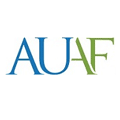Universities in Afghanistan

American University of Afghanistan
Kabul, Afghanistan
The American University of Afghanistan is currently offering 2 degree courses: Business Administration and Information Communication Technology. Students may change their degree program as long as they meet all of the requirements for graduation. Additional degree programs will be added as the university develops. As a liberal arts university, all students will take a wide range of courses for the first two years of the degree program. Courses include literature, science, social sciences, philosophy and the arts.
Universities in Afghanistan by City:
KabulAbout universities in Afghanistan
Afghanistan, one of the world’s most underdeveloped and unstable nations, is in desperate need of an improved higher education system. Literacy is less than 30% among Afghan adults (less than 14% for women), and decades of violence have disrupted the political and economic stability needed in order for such a system to develop. Instability and lack of education are mutually reinforcing, and it is this cycle that has created the problems we see today in Afghanistan. Fortunately, there are improvements being made, and Afghanistan may be on the verge of turning a corner towards a brighter future and a more comprehensive education for its citizens.
Problems with Afghanistan’s education are rooted in long-term endemic underdevelopment and the natural geography of the country (high, cold mountains and barren deserts comprise most of Afghanistan’s land, making governance and development particularly difficult), and also in its recent history. For the last few decades, Afghanistan has seen a precipitous rise in violence, beginning with the Soviet invasion and continuing with the Taliban insurgency and the current US-led war. These decades of violence have made going to school dangerous even for those who have access to educational facilities, and destroyed much of the infrastructure on which education depends.
The current challenges for higher education in Afghanistan are many. One of the greatest problems is the absence of basic infrastructure such as roads, running water, and electricity, throughout much of the country. It is extremely difficult to obtain a credible degree without access to electricity and basic sanitation. Human capital is also difficult to find, and qualified teachers are extremely scarce in this country due to the absence of native institutions to train them. To make matters worse, those Afghans who do manage to get a degree and have the skills to teach seldom choose to do so – instead, they seek opportunities in other countries. In order to reverse this trend, it will be necessary for institutions of higher education in Afghanistan to develop a kind of “critical mass” of effectiveness and output so that there are enough PhD graduates to fill the role of instructors, thus helping push Afghanistan to a self-sustaining level of higher education achievement.
There are, fortunately, major improvements being made to this system. The outpouring of American and international aid in the wake of the 2001 invasion has enabled the construction of roads, bridges, electrical grids, and school buildings throughout the country. Demand for higher education is on the rise as refugees return and as improved high schools put out many more qualified candidates than they did previously. In 2006, Afghanistan’s first private institution of higher learning, the American University in Afghanistan, was founded in Kabul. Based on the US liberal arts model, AUA promises to help serve the needs of these aspiring Afghan college students whose studies and subsequent work will be the cornerstone of efforts to rebuild the country.
Problems with Afghanistan’s education are rooted in long-term endemic underdevelopment and the natural geography of the country (high, cold mountains and barren deserts comprise most of Afghanistan’s land, making governance and development particularly difficult), and also in its recent history. For the last few decades, Afghanistan has seen a precipitous rise in violence, beginning with the Soviet invasion and continuing with the Taliban insurgency and the current US-led war. These decades of violence have made going to school dangerous even for those who have access to educational facilities, and destroyed much of the infrastructure on which education depends.
The current challenges for higher education in Afghanistan are many. One of the greatest problems is the absence of basic infrastructure such as roads, running water, and electricity, throughout much of the country. It is extremely difficult to obtain a credible degree without access to electricity and basic sanitation. Human capital is also difficult to find, and qualified teachers are extremely scarce in this country due to the absence of native institutions to train them. To make matters worse, those Afghans who do manage to get a degree and have the skills to teach seldom choose to do so – instead, they seek opportunities in other countries. In order to reverse this trend, it will be necessary for institutions of higher education in Afghanistan to develop a kind of “critical mass” of effectiveness and output so that there are enough PhD graduates to fill the role of instructors, thus helping push Afghanistan to a self-sustaining level of higher education achievement.
There are, fortunately, major improvements being made to this system. The outpouring of American and international aid in the wake of the 2001 invasion has enabled the construction of roads, bridges, electrical grids, and school buildings throughout the country. Demand for higher education is on the rise as refugees return and as improved high schools put out many more qualified candidates than they did previously. In 2006, Afghanistan’s first private institution of higher learning, the American University in Afghanistan, was founded in Kabul. Based on the US liberal arts model, AUA promises to help serve the needs of these aspiring Afghan college students whose studies and subsequent work will be the cornerstone of efforts to rebuild the country.

